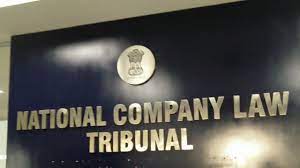PRAVASISAMWAD.COM
A proactive surveillance system is the dire need of the hour.
The National Company Law Tribunal’s (NCLT) June 7 order allowing the takeover of Mumbai-headquartered Dewan Housing Finance Limited (DHFL) by Piramal group was another big blow to crony capitalism in India – to the industrialists who built large companies but failed to pay back loans to banks and financial institutions. DHFL, a big name in the home loan space, owed its lenders (banks and financial institutions) a staggering Rs 91,000 crores!
Though the NCLT order can still be challenged in the National Company Law Appellate Tribunal (NCLAT) and the Supreme Court, the message is once again loud and clear: that the industrialists’ cavalier attitude resulting in non-payment of loans to banks and financial institutions won’t be brooked.
Ever since Insolvency and Bankruptcy Code, 2016 (IBC), came into effect for reorganization and insolvency resolution of business firms, including corporates, several large companies have changed, or are set to change, hands. Some of these are Essar Steel, Bhushan Steel, Bhushan Steel and Power, Videocon group of companies, Monnet Ispat and Energy, Electrosteel Castings etc.
Apparently, errant tycoons, who were shy of fulfilling their financial obligations, are feeling the heat now. This could see a big positive for credit discipline in India. The Supreme Court has ruled that personal guarantees of promoters of defaulter companies could be invoked for the repayment of loans and the interest thereon. In other words, the personal assets of promoters of defaulter companies can now be auctioned to repay debt taken by their companies.
This is on top of government agencies being hot on heels of fugitive tycoons like liquor king Vijay Mallya and diamantaires Mehul Choksi and Nirav Modi to bring them back to India to face trial in the Indian courts for their acts of defrauding banks and financial institutions.
The insolvency issue has assumed importance as bad loans, mainly to corporates, have bedevilled the Indian banking industry for the past several years. Ever since the RBI unveiled new norms for the recognition of banks’ sticky loans, several leading private and public sector banks had to make hefty provisions quarter after quarter to write off bad loans, which played havoc with their financial health.
What is striking in many of the insolvency cases is that their erstwhile promoters put in offers, at a very late stage of NCLT hearings, to pay back a major part of their accumulated liabilities. This has strengthened the public perception that they had all along the financial muscles to fulfil their obligations.
Ruia brothers-promoted (remember, Ruias were once spoken of in the same breath as Dhirubhai Ambani) Essar Steel was among the first 12 big defaulters referred by the RBI to the insolvency courts under the IBC. The company went under the hammer and was lapped up by the global steel major, ArcelorMittal, owned by an industrialist of Indian origin, Laxmi Mittal, for a consideration of Rs 42,000 crore. The company had run up a debt of Rs 54,389 crore!
After the SC okayed the ArcelorMittal bid, an Essar spokesperson had said they (the former) were acquiring a world-class facility in a market that has a long runway for growth. But the irony is that despite these two big advantages, the company, under Ruias, could not make its operations profitable enough over an extended period of time spanning decades. Was this symptomatic of ‘chalta hai’ mindset, observers wondered.
Ruias’ another jewel in the crown, Essar Oil’s Indian assets – comprising the country’s second largest oil refinery, India’s largest network of private petrol pumps, a 1000 MW power plant along with the Vadinar port and oil terminal – were lapped up for $12.9 billion by Russian energy giant Rosneft and its partners in 2017. But this ‘value unlocking’ of sorts – intended to pare debt – had to wait for the right-wing Modi govt’s operation clean-up by way of the IBC, 2016.
Apparently, errant tycoons, who were shy of fulfilling their financial obligations, are feeling the heat now. This could see a big positive for credit discipline in India.
The twist in the tale of Essar Steel was that when the loss of company’s control appeared inevitable, Ruias offered a package to pay Rs 54,389 crore to clear the dues. In a similar manner, Brij Bhushan Singal and his family made a belated offer in a bid to retain control of Bhushan Steeel, which had run up a debt of over Rs 63,000 crore. So did try Kapil Wadhawan of Dewan Housing. Bhushan Steel finally went in the bag of Tata Steel, and Bhushan Power and Steel to JSW Steel in September 2019.
However, the bankruptcy resolution issues have brought to the fore the need for a regulatory system that takes note of incipient sickness before it is too late. In many cases, banks and financial institutions had to write off a disproportionately large portion of their loans (called haircut) under the resolution package. What’s is the use of closing the stable after the horses have bolted!! Around 2008-2010, it was abundantly clear that Vijay Mallya’s Kingfisher Airlines was failing, but the banks and financial institutions kept pumping thousands of crores in the company for reasons best known to them. A proactive surveillance system is the dire need of the hour.
At the same time, a helping hand should be forthcoming from the government in case of genuine entrepreneurial mistakes and misfortune. A fine-tuned carrot and stick approach is needed for the India Inc’s animal spirits to keep kicking, even though any impression of government support to industry makes for bad optics in our polity.
(* Navendu Sharma worked with the Times of India for about 25 years. He also worked with five other newspapers on senior journalist positions.)




